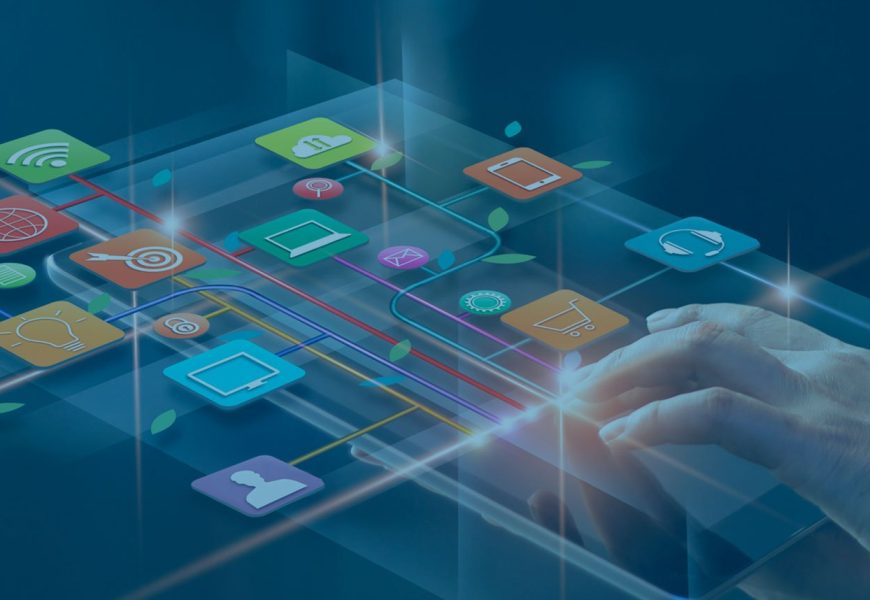In the fast-paced world of technology, staying ahead means embracing the latest techniques in iOS app development. Whether you’re a business seeking custom iOS application development services or a developer aiming to enhance your skills, understanding these new methods is crucial. This guide explores the cutting-edge techniques that are shaping the future of iOS development.
The Evolution of iOS Development
iOS app development has come a long way, with Apple constantly introducing new tools and frameworks. These advancements not only simplify the development process but also enable the creation of more powerful and user-friendly apps. Let’s delve into the latest techniques that are making waves in the industry.
Embracing SwiftUI for User Interface Design
SwiftUI is Apple’s modern framework for building user interfaces across all Apple platforms. It offers a declarative syntax, allowing developers to create UIs with less code.
- Simplified Code: SwiftUI reduces the amount of code needed for UI design.
- Cross-Platform Compatibility: Build interfaces that work on iOS, macOS, watchOS, and tvOS.
- Real-Time Previews: Instantly see changes in the UI as you code.
By adopting SwiftUI, developers can create sleek and responsive interfaces more efficiently.
Leveraging Combine for Reactive Programming
Combine is a framework that provides a declarative Swift API for processing values over time.
- Asynchronous Programming: Handle asynchronous events smoothly.
- Data Stream Management: Manage data streams and event handling effectively.
- Improved Code Readability: Cleaner code with less boilerplate.
Using Combine enhances app responsiveness and improves user experience.
Integrating Machine Learning with Core ML
Core ML allows developers to integrate machine learning models into their apps.
- On-Device Processing: Perform machine learning tasks without sending data to servers.
- Enhanced Performance: Faster processing times and better app performance.
- Privacy-Friendly: Keeps user data on the device, enhancing privacy.
Apps can offer features like image recognition, natural language processing, and more, all powered by Core ML.
Exploring Augmented Reality with ARKit
ARKit enables the creation of immersive augmented reality experiences.
- Realistic AR Content: Place virtual objects in real-world environments.
- Interactive Experiences: Engage users with interactive AR elements.
- Expanding Possibilities: From gaming to retail, AR offers diverse applications.
Incorporating ARKit can set your app apart by offering unique and engaging user experiences.
Streamlining Dependencies with Swift Package Manager
Swift Package Manager simplifies the process of managing dependencies.
- Easy Integration: Add and manage third-party libraries effortlessly.
- Automated Updates: Keep dependencies up-to-date with minimal effort.
- Open-Source Support: Access a wide range of community packages.
This tool helps maintain clean and organized projects, reducing development time.
Enhancing User Experience with App Clips
App Clips are lightweight versions of apps that load quickly.
- Instant Access: Users can access features without downloading the full app.
- Convenience: Ideal for on-the-go services like parking meters or rental services.
- Easy Discovery: Accessible via NFC tags, QR codes, or links.
Implementing App Clips can increase user engagement and attract new users.
Supporting Dark Mode
Dark Mode provides a dark color scheme that’s easy on the eyes.
- User Preference: Many users prefer dark themes, especially in low-light conditions.
- Battery Efficiency: Saves battery life on devices with OLED screens.
- Modern Aesthetics: Gives apps a sleek, contemporary look.
Ensuring your app supports Dark Mode can improve user satisfaction.
Prioritizing Accessibility
Making apps accessible ensures that all users can interact with them effectively.
- VoiceOver Integration: Support for screen readers.
- Dynamic Type: Adjusts text size based on user settings.
- High Contrast Modes: Improves visibility for visually impaired users.
An accessible app reaches a wider audience and complies with ethical standards.
Strengthening Security Measures
With growing concerns over data privacy, enhancing security is vital.
- Biometric Authentication: Utilize Face ID and Touch ID for secure logins.
- Encrypted Data Storage: Protect sensitive information.
- Secure Network Communications: Implement HTTPS and SSL protocols.
Robust security features build trust with users and protect your app from threats.
Custom iOS Application Development Services
Businesses often require tailored solutions to meet specific needs.
- Personalized Features: Custom apps offer functionalities aligned with business goals.
- Scalability: Designed to grow with your business.
- Competitive Advantage: Unique apps can set a business apart in the market.
Investing in custom iOS application development services ensures that businesses get apps that fit their exact requirements.
Key Industry Insights and Trends
Staying informed about industry trends helps in making strategic decisions.
The Rise of On-Demand Apps
Apps like food delivery and ride-sharing services are booming.
- Convenience: Users value immediate access to services.
- Customization: Personalized options enhance user satisfaction.
- Market Growth: Opportunities are expanding in various sectors.
Developing on-demand apps can tap into this growing market.
Integration of IoT in iOS Apps
The Internet of Things (IoT) connects devices for seamless interactions.
- Smart Home Integration: Control devices through apps.
- Data Collection: Gather insights from connected devices.
- Automation: Enhance efficiency with automated processes.
IoT integration offers innovative solutions for users and businesses alike.
Emphasis on Privacy and Data Security
Users are increasingly concerned about how their data is used.
- Transparency: Clear policies build trust.
- Compliance: Adhering to regulations like GDPR.
- Enhanced Protection: Implementing advanced security measures.
Prioritizing privacy can enhance your app’s reputation and user loyalty.
Conclusion
The landscape of iOS app development is continuously evolving. By embracing the latest techniques, developers and businesses can create apps that are not only functional but also innovative and user-friendly. From utilizing SwiftUI and ARKit to focusing on security and accessibility, these advancements open up new possibilities in app development.
FAQs
- What are the benefits of using SwiftUI in iOS development?
SwiftUI simplifies the process of building user interfaces with its declarative syntax, reducing code complexity. It allows for real-time previews, making the development process more efficient. Additionally, SwiftUI provides cross-platform compatibility across all Apple devices. - How does Core ML enhance app functionality?
Core ML enables apps to perform machine learning tasks on-device, offering features like image recognition and natural language processing without compromising user privacy. This leads to faster processing times and a more personalized user experience. - Why is ARKit significant in app development?
ARKit allows developers to create immersive augmented reality experiences. By integrating virtual objects into the real world, apps can offer interactive and engaging features, which can be used in gaming, education, retail, and more. - What is the role of custom iOS application development services?
Custom iOS application development services provide tailored solutions to meet specific business needs. They offer personalized features, scalability, and can give businesses a competitive edge by delivering unique and specialized apps. - How can I ensure my iOS app is secure?
Ensuring app security involves implementing biometric authentication like Face ID and Touch ID, encrypting data storage, and using secure network communication protocols like HTTPS and SSL. Regular updates and compliance with privacy regulations also enhance security.









